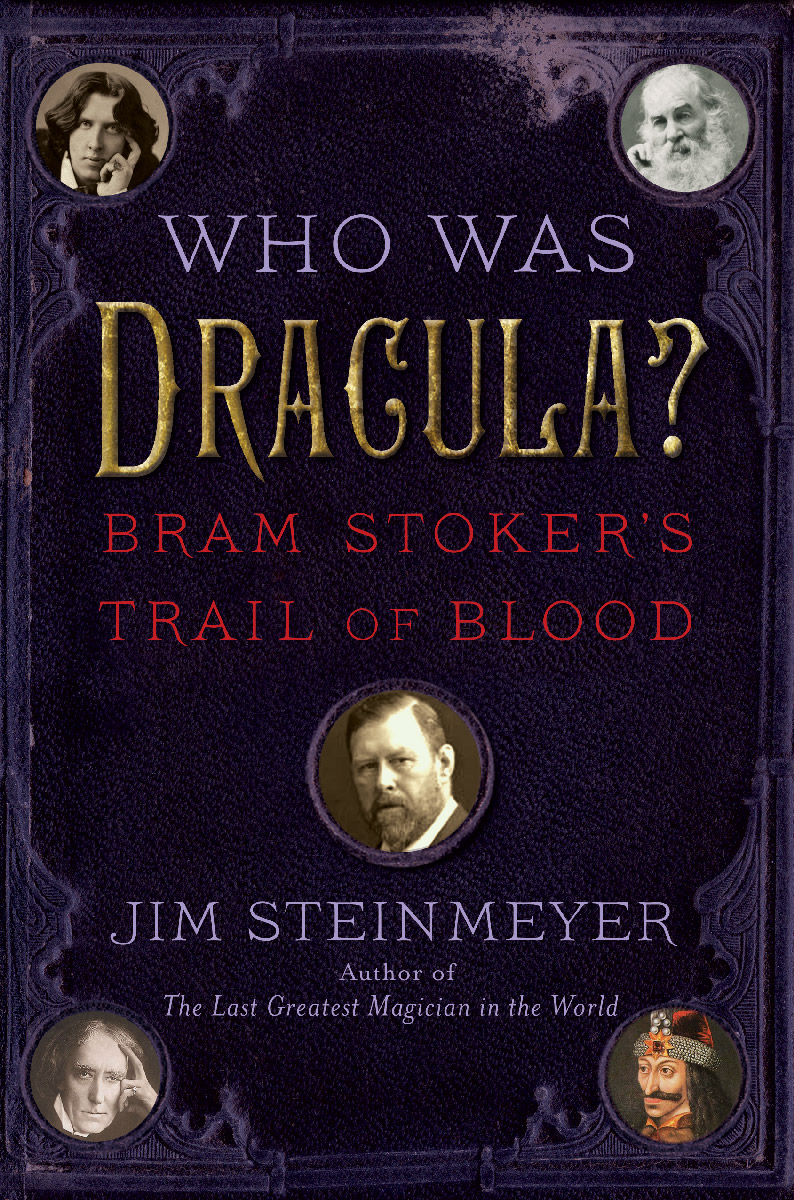
Who Was Dracula?
Bram Stoker's Trail of Blood
کتاب های مرتبط
- اطلاعات
- نقد و بررسی
- دیدگاه کاربران
نقد و بررسی

December 17, 2012
To get to the bottom of novelist Bram Stoker’s inspiration for his infamous Count Dracula, Steinmeyer (The Last Greatest Magician in the World) investigates turn-of-the-century London through the lens of Stoker’s cohort of actors and writers. At the forefront is Henry Irving, the renowned English actor widely recognized as the vampire’s chief influence. Stoker himself admits Dracula to be “a composite of so many parts in which he has been liked.” The opening chapters cover Stoker’s life as “Acting Manager” at Irving’s Lyceum Theatre, a job that placed him in the midst of macabre classics such as Faust and The Strange Case of Dr. Jekyll and Mr. Hyde—surely influences on his tastes if not on his greatest novel. From this position, the novelist met with Walt Whitman, Oscar Wilde, and (potentially) Jack the Ripper—or Dr. Francis Tumblety, Scotland Yard’s prime suspect in the gruesome murders. By detailing the relationship Stoker had to these diverse figures, Steinmeyer presents a composite inspiration for the mad vampire. His analysis of Whitman’s influence on Dracula’s voice proves most compelling. Though some of Steinmeyer’s arguments, especially regarding the role of Wilde, are less convincing, overall, this is a well-researched and entertaining take on Dracula’s origin story. Agent: James Fitzgerald.

February 1, 2013
Steinmeyer (The Last Greatest Magician in the World, 2011, etc.) reveals the variety of influences on Stoker's most (some would say only) memorable work of fiction. The author posits that the four greatest influences on Stoker were Walt Whitman, Oscar Wilde, Jack the Ripper and the actor Henry Irving. Stoker was Irving's general factotum and "acting manager" over a period of 30 years, and his influence would be obvious. Whitman was a childhood hero, and Jack the Ripper's murders in London at that time piqued everyone's interest. The city in the 1890s was rife with characters like Wilde, who affected the tastes of that golden age, and most crossed paths with Stoker. Just as 1920s Paris housed a vast menagerie of writers, actors and other artists, so Stoker's life working for Irving at the Lyceum Theatre brought him into contact with all of the era's adventurers and storytellers. They met after productions in the Lyceum's Beefsteak room with their own tales of travel, discovery and absurdities; many of these tales found their way into Stoker's story of the Transylvanian vampire. Oddly, Stoker was obsessive about making sure his facts were correct, right down to the landscape of Yorkshire, tides and London train schedules, but he never visited the Carpathians, where the novel takes place. Further, his notes never mentioned Vlad the Impaler, the historical figure most identify as the inspiration for Dracula. Steinmeyer takes us inside the genesis of the novel, "a swirl of nightmarish images that had been borrowed from real heroes, villains, heightened dramas, and theatrical tragedies." The author does a solid job analyzing the birth and development of Dracula and illustrating the character traits Stoker cherry-picked from his wide circle of friends.
COPYRIGHT(2013) Kirkus Reviews, ALL RIGHTS RESERVED.

Starred review from March 1, 2013
Who was the real Dracula? Steinmeyer's (The Glorious Deception) new title seeks the genesis of author Bram Stoker's enduringly popular character. The author argues that Stoker was heavily influenced by four people in creating the character of Dracula: Walt Whitman, Oscar Wilde, actor Henry Irving, and Jack the Ripper. Stoker knew at least three of these individuals, and Steinmeyer makes a good case for the fourth--and for a positive identification of the Ripper. The author's Dracula-creation hypothesis initially comes across as gimmicky, but Steinmeyer skillfully contextualizes his assertions to support his sensational claim. He weaves a fantastic, well-documented story in this lively read. Although other titles have explored the vampire's origins in history, e.g., Radu Florescu and Raymond T. McNally's In Search of Dracula: The History of Dracula and Vampires, or popular misconceptions about Stoker's novel, e.g., Elizabeth Miller's Dracula: Sense and Nonsense, this work focuses solely on Stoker's inspirations for his titular character. VERDICT These results deserve to find a wide popular readership, and will engage both critical, scholarly readers (who will find that Steinmeyer's notes direct them purposefully towards deeper study) and Twilight fans alike.--Audrey Snowden, Orrington P.L., ME
Copyright 2013 Library Journal, LLC Used with permission.

March 15, 2013
Unlike McNally and Florescu's In Search of Dracula (1972), which explored the allegedly historical origins of the world's most famous bloodsucker, Steinmeyer focuses on Stoker's creation of the dread vampire. Think of it as sort of a literary detective story. How did Stoker, an otherwise mostly undistinguished novelist, seize upon the idea for his greatest work? It turns out we can thank the great Victorian stage actor Henry Irving, whose performance as Mephistopheles inspired the visual look of Stoker's creation. John Polidori's seminal 1818 short story, The Vampyre, was also an influence, as Stoker mined popular vampire mythology for his own novel and Eastern European history for the setting of the story. Steinmeyer notes along the way that, despite the assertions of other writers, Stoker knew little about the historical Dracula, the fifteenth-century Wallachian ruler and torturer, Vlad Tepes; in fact, Stoker got the meaning of the name Dracula wrong, having cribbed its connotation as devil from a writer who also got a lot of his facts wrong. A work of enthusiastic scholarship and shrewd literary detection that will appeal both to Stoker scholars and garden-variety Dracula fans.(Reprinted with permission of Booklist, copyright 2013, American Library Association.)

























دیدگاه کاربران